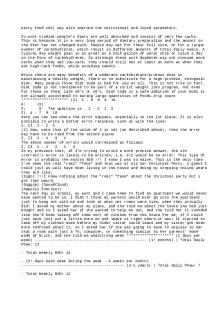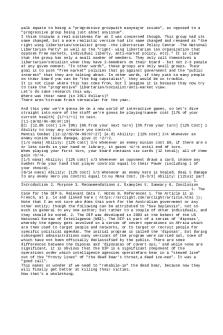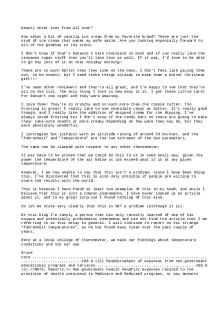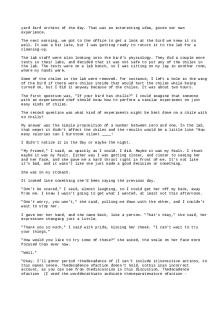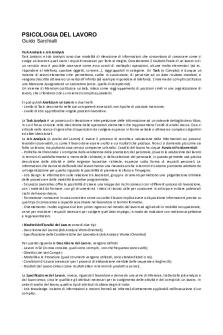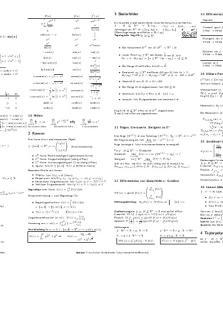Rashomon Analysis PDF

| Title | Rashomon Analysis |
|---|---|
| Author | Austin Glass |
| Course | Essay Writing |
| Institution | Saint Louis University |
| Pages | 1 |
| File Size | 40.3 KB |
| File Type | |
| Total Downloads | 59 |
| Total Views | 122 |
Summary
Gives an in depth analysis on themes and cinematic methods used as well as criticisms on aspects of plot and development....
Description
In Akira Kurosawa’s 1950 film Rashomon, Kurosawa tells the same story four distinct times and each story holds different information. These stories are told separately, Kurosawa leads the audience to see differences and similarities in the stories that ultimately allow the audience to decipher what story, or story parts, is correct. The story follows the interaction between a bandit, a samurai, and his wife. Each story is told a bit differently. The first time the audience hears the story it is from the perspective of the bandit, Tajomaru. Tajomaru says that he tied up the samurai and that the samurai’s wife told Tajomaru to duel him for the sake of her honor. He then confesses that he killed the samurai in combat. Tajomaru says that the woman was fierce, but when the woman tells her story, she is anything but fierce. The two differing stories say a lot about the characters. Tajomaru tells a gallant tail of how he seduced a woman to fall for him and then bested her husband in combat. This tale suits to bolster Tajomaru’s reputation making him somewhat noble for not wanting to kill the samurai but ultimately besting him in a duel, and also gives him the increase in status as a womanizer. The wife told her story in a way that would make her seem frail and victimized. By claiming that Tajomaru raped her and that she begged her husband to kill her for her dishonor, she keeps her status as a frail woman and now a widow. The contrast between the two stories makes the motives stand out, and character motives are only noticeable through the telling of different stories. A medium told the story from the dead samurai’s perspective. The medium said that Tajomaru had asked the samurai whether Tajomaru should kill his wife or let her go. This resulted in the samurai forgiving Tajomaru. The samurai’s story is different from the others and shows the motivations for the samurai. For the samurai, the most important thing is honor. When Tajomaru gives the samurai the option to kill his wife or let her go that makes Tajomaru and honorable person. Tajomaru being honorable allows the samurai to pass on without his wife being dishonored, so he kills himself to leave his wife with honor. The final retelling is done by the woodcutter who claims to have witnessed the unfolding tale. His version of the story combines a lot of aspects from the other stories. For instance, he bandit and the samurai fight like in Tajomaru’s telling, but it is much more pitiful. The woodcutter’s version almost seems to be what is true, but his dramatization of the characters reveals his true motives. He wants selfpreservation, and by giving different participants certain character traits, like making the wife scary or making Tajomaru a killer. Ultimately, it is not possible to make a conclusion about what story is correct. Only speculations can be made about the truth. My personal belief is that the truth lies in between the four stories. I have been told that the truth is somewhere between the lies, and in Rashomon the truth is between the four lies. Looking at the samurais death, there are four different situations. In one, Tajomaru beat the samurai in glorious combat, in another the death was not seen until after he was dead, in the other the samurai kills himself, and in the last Tajomaru kills the samurai squeamishly. So what lies between those four scenarios is something along the lines of Tajormaru accidently killing the samurai. By applying this string of logic to every event in the four stories, I believe that would be about where the truth lies....
Similar Free PDFs
Popular Institutions
- Tinajero National High School - Annex
- Politeknik Caltex Riau
- Yokohama City University
- SGT University
- University of Al-Qadisiyah
- Divine Word College of Vigan
- Techniek College Rotterdam
- Universidade de Santiago
- Universiti Teknologi MARA Cawangan Johor Kampus Pasir Gudang
- Poltekkes Kemenkes Yogyakarta
- Baguio City National High School
- Colegio san marcos
- preparatoria uno
- Centro de Bachillerato Tecnológico Industrial y de Servicios No. 107
- Dalian Maritime University
- Quang Trung Secondary School
- Colegio Tecnológico en Informática
- Corporación Regional de Educación Superior
- Grupo CEDVA
- Dar Al Uloom University
- Centro de Estudios Preuniversitarios de la Universidad Nacional de Ingeniería
- 上智大学
- Aakash International School, Nuna Majara
- San Felipe Neri Catholic School
- Kang Chiao International School - New Taipei City
- Misamis Occidental National High School
- Institución Educativa Escuela Normal Juan Ladrilleros
- Kolehiyo ng Pantukan
- Batanes State College
- Instituto Continental
- Sekolah Menengah Kejuruan Kesehatan Kaltara (Tarakan)
- Colegio de La Inmaculada Concepcion - Cebu



